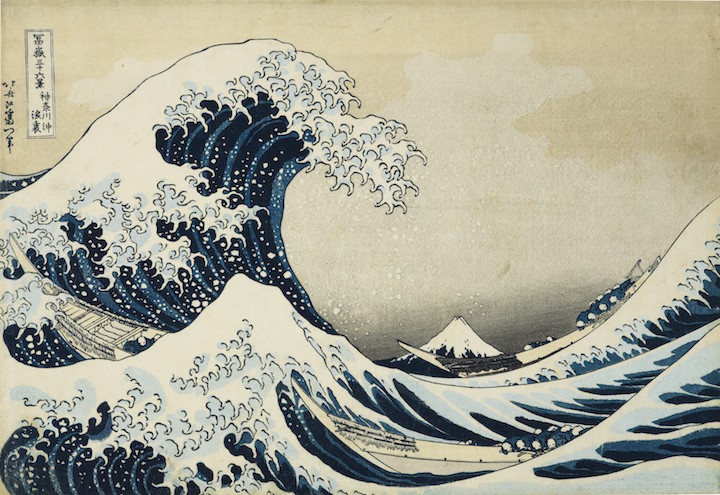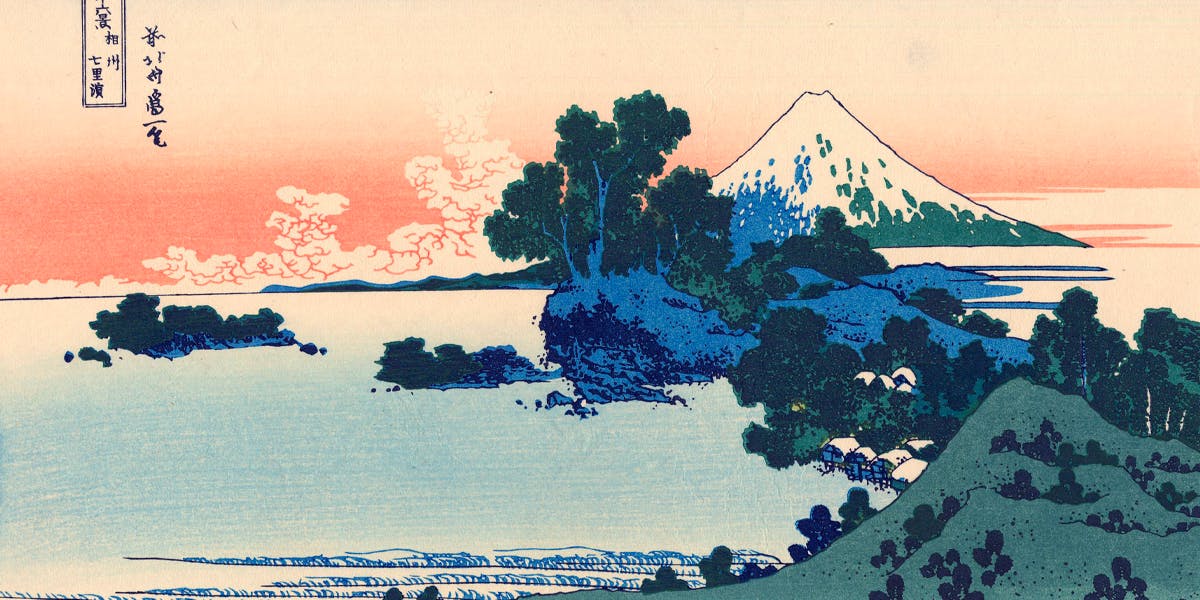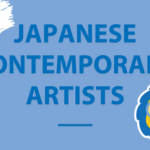What is Ukiyo-e 浮世絵? || The Story of Japan's Most FAMOUS Artwork
WHAT’S THE STORY BEHIND JAPAN’S MOST FAMOUS ARTWORK?
Japanese art has an incredibly rich history and many works produced in Japan have become famous all over the world.
We’ve already taken a quick look at contemporary art, but now we’d like to take you back in time and tell the story of what many believe to be the most famous artwork in Japanese history and the art style behind it: ukiyo-e.
Even if the name ukiyo-e is unfamiliar, we are certain you will recognize the aesthetics of ukiyo-e works.
We are also completely certain that you’ll recognize the most famous ukiyo-e work of all time…
Hokusai’s The Great Wave off Kanagawa (1831)

The Great Wave depicts three boats tossed about by an enormous tsunami against the backdrop of a snow-capped Mount Fuji, and is considered by many to be the “most reproduced artwork in history.”
There is not one “definitive” version of the print, and many museums throughout the world have impressions of The Great Wave.
You can see it at the Met in NYC, the British Museum in London, and the Sumida Hokusai Museum in Tokyo!
But why is it so famous? Who is the master behind the work?
Let’s delve into the answers to these questions and more!
Ukiyo-e || Introduction
Ukiyo-e || Hokusai
Ukiyo-e || The Great Wave
Ukiyo-e || FAQs

Introduction || What is Ukiyo-e?
History
Ukiyo-e, or 浮世絵 (うきよえ), which literally translates to “pictures of the floating world,” is a genre of art that was popular in the Edo (or Tokugawa) Period during the 17th to 19th centuries.
The genre is known for its dynamic woodblock prints, which depicted scenes of urban life, performance, and even folk tales.
Prints were widely accessible at the time, and they were popular among ordinary people.
So why “floating world”?
you may ask…
“Floating world” referred to the transient, pleasure-seeking lifestyle of the city of Edo (now Tokyo), which flourished as a result of rapid economic growth.
A new type of culture emerged that celebrated the fleeting pleasures of the moment, characterized by kabuki theatre performances, geishas, and fashion trends.
Ukiyo-e artists wanted to celebrate and capture this new-found vibrance and excitement in Japan at the time.
Some of the most famous ukiyo-e artists include Katsushika Hokusai (葛飾北斎, 1760-1849) and Utagawa Hiroshige (歌川広重, 1797-1858).
Global Impact
As we mentioned before, versions of Hokusai’s Great Wave can be found in museums around the world.
Prior to the Meiji Restoration in 1868, Japan had an absolute ban on imports and exports under a policy called sakoku 鎖国, literally meaning “chained country.”
The lifting of this ban meant that Japanese art, particularly ukiyo-e prints, was quickly exported to Europe and America.
Indeed, Ukiyo-e was crucial in forming the global perception of Japanese art in the late 19th century, and influenced the works of artists like Claude Monet, Edgar Degas, and even Vincent Van Gogh!
One of the most famous artists in art collections both inside and outside Japan at the time was Hokusai.

Japanese TV Shows (On Netflix) 📺 Ten TV Shows To Binge On
Today you are going to discover the best Japanese TV Shows you need to watch now. Every single one of these is available on Netflix for you to enjoy!
Who was Hokusai?
Hokusai was born in Edo (Tokyo) to an artisan family.
DID YOU KNOW || aged 14, he became an apprentice wood-carver, later entering the studio of famed ukiyo-e artist, KaKatsukawa Shunshō.
He continued to develop his craft under Shunshō, while also being influenced himself by European artistic styles, like French and Dutch copper engravings, but also by techniques like western linear perspective.
Hokusai became a master of his craft and an icon both within Edo and in the world of art.
His woodblock prints were collected around the world from the mid-19th century onward, with his works collected by artists like Degas, Van Gogh, Paul Gaugin, and Gustav Klimt.
His prints were widely available at the time, with the artist making multiple impressions of the same print.
In fact, in the case of The Great Wave, scholars estimate that there may have been between 500 and 1000 original impressions of the print.

Three Japanese Contemporary Artists You Need To Know || Japanese Art
Want to know more about Japanese art? LTL introduces three iconic contemporary artists that you’ll find in museums in Japan and abroad!
Mount Fuji and The Great Wave off Kanagawa
Hokusai’s The Great Wave is actually part of a larger series of prints called Thirty-Six Views of Mount Fuji, which consists of images of, you guessed it, Mount Fuji!
DID YOU KNOW || Fuji is still considered an active volcano! It last erupted as recently as the year 1707.
During Hokusai’s time, the sight of it evoked feelings of both pleasure and fear.
Indeed, Fuji was, and still is, also a symbol of national pride, being one of the tallest peaks in East Asia. There are many that also believed that Mount Fuji harbored the secret to immortality.
This is why Hokusai’s prints of Fuji were exceptionally popular at the time.
While each of the thirty-six views depicts Fuji from different angles and locations, it is The Great Wave off Kanagawa that has become the most iconic.
DID YOU KNOW || A print of The Great Wave off Kanagawa was sold at auction in New York (2023) for a record price of US$2.8 million!
Although waves were not a new artistic motif in Japan, what made Hokusai’s Great Wave special at the time was the way it reflected Japan’s actual coastline.
The painting depicts a scene in Kanagawa, specifically Enoshima, a popular destination for travelers (both in the 19th century and today), from which you can view Mount Fuji.
Another famous print from this series which you might recognize is Fine Wind, Clear Morning, also known as Red Fuji.

Only in Japan || 12 Wonderful & Unique Places to Stay in Japan (+ A Bonus Entry)
If you’re looking for unique places to stay in Japan, you won’t be disappointed. Here are the 12 best places to stay in Japan with a bonus option also.
With many museums and galleries across the country, Japan is a haven for art-lovers!
But if you’re not able to go to Japan, do not fear…
You can see Japanese art all over the world – chances are you can even find an impression of The Great Wave in your city!
Who is your favourite Japanese artist? Let us know in the comments.
AND DON’T FORGET || you can study Japanese with LTL in Japan with our immersive courses, or online right now with Flexi Classes 😎
Ukiyo-e || FAQs
Who made the artwork of the tsunami?
The image you’re thinking of is The Great Wave off Kanagawa, which depicts an enormous tsunami against the backdrop of a snow-capped Mount Fuji, and is considered by many to be the “most reproduced artwork in history.”
The artist is Katsushika Hokusai, a famous Japanese ukiyo-e artist.
What does ukiyo-e mean?
Ukiyo-e (浮世絵) means “pictures of the floating world” and was a genre of art popular in the Edo (or Tokugawa) Period
“Floating world” referred to the transient, pleasure-seeking lifestyle of the city of Edo (now Tokyo), which flourished as a result of rapid economic growth.
The majority of ukiyo-e prints depicted urban life.
Where can I see Hokusai’s Great Wave?
In the case of The Great Wave, scholars estimate that there may have been between 500 and 1,000 original impressions of the print, so chances are you can even find one in your city!
You can see this iconic work at the Met in NYC, the British Museum in London, and the Sumida Hokusai Museum in Tokyo, to name just a few.
Want More From LTL?
WANT TO LEARN JAPANESE? Check out our online Japanese courses here.
We offer a 7-day free trial to all new students where you can study 24/7.
What about studying Japanese in Japan instead? We’ve got your back. Our Japanese courses in Tokyo can either be taken in small groups of no more than 5 students or individually for a more tailored experience.
We even offer incredible homestay experiences in Tokyo as well.
Come and be a part of this amazing community.









